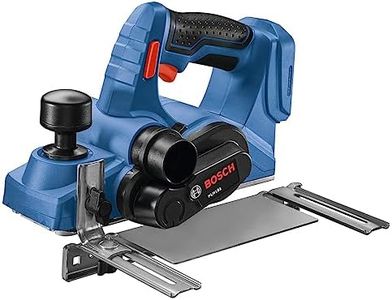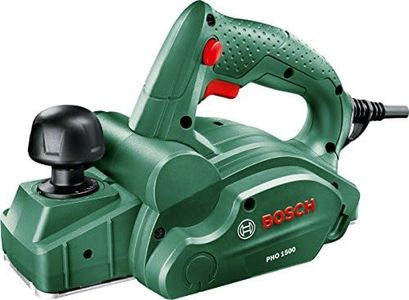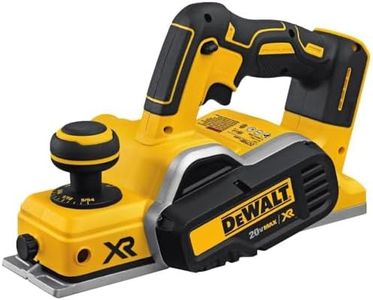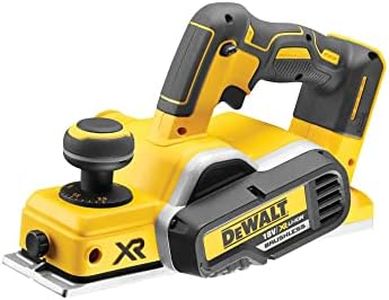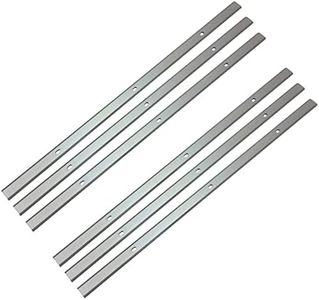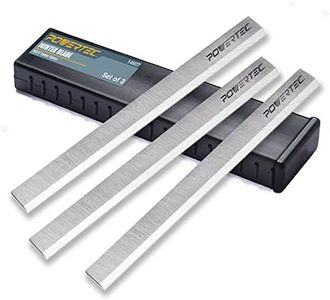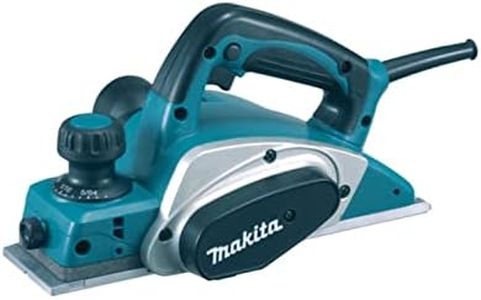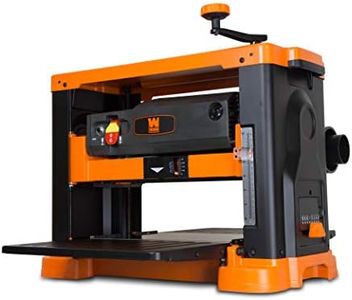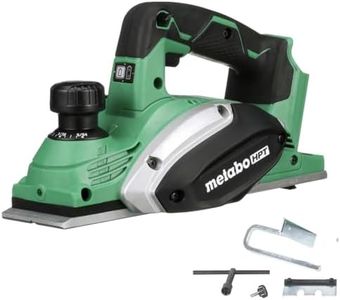We Use CookiesWe use cookies to enhance the security, performance,
functionality and for analytical and promotional activities. By continuing to browse this site you
are agreeing to our privacy policy
10 Best Benchtop Planers
From leading brands and best sellers available on the web.Buying Guide for the Best Benchtop Planers
Choosing the right benchtop planer is essential if you work with wood and want to achieve smooth, even surfaces or thicknesses. The right planer can save time, improve the quality of your projects, and ensure you get consistent results whether you’re building furniture, cabinetry, or DIY essentials. Before buying, it’s important to consider how much you’ll use it, the size of the material you plan to work with, and the level of finish you want. Understanding the main specifications is key to making the best decision for your needs.Cutting WidthCutting width refers to the maximum width of the board the planer can handle in a single pass. This is important because it sets the limitation on the sizes of the lumber you can plane. Planers typically range from about 12 inches to 13 inches in width. If you plan on working with full-size planks or wider boards, a larger cutting width is beneficial. For smaller or more typical hobbyist projects, a standard width will suffice. Consider the kinds of projects you do most to decide what width makes sense for you.
Maximum Cutting DepthMaximum cutting depth is the deepest amount of wood the planer can remove in one pass. Greater depth allows for quicker work but can put more strain on the motor and affect the finish quality. Planers often offer depths from around 1/16 inch up to 1/8 inch per pass. Lighter cuts are usually smoother and kinder to the machine, while deeper cuts can speed up rough work. If your projects involve removing lots of material from rough wood, prioritize a planer with a greater cutting depth, but if you mostly finish or fine-tune boards, a smaller depth is usually adequate.
Motor PowerMotor power, measured in amps, tells you how much force the planer can maintain when cutting. More powerful motors (generally 15 amps or above) make it easier to handle harder woods and deeper cuts without slowing down or stalling. Less powerful motors might be fine for softwoods and lighter use. If you work with hardwoods or larger volumes of wood, go for a higher-powered motor to avoid frustration and downtime.
Cutterhead TypeThe cutterhead is the part that holds the blades and does the actual cutting. There are two main types: straight knife and helical (spiral) cutterheads. Straight knife cutterheads use two or three long blades and are common in entry-level planers, offering good value and simple blade replacement. Helical cutterheads use many small, square blades staged in a spiral, leading to quieter operation, smoother finishes, and easier maintenance. If you prioritize an ultra-smooth finish or work frequently with figured or tricky grains, a helical head may be worth seeking out. For normal use, straight knives suffice.
Feed RateFeed rate is how fast the wood moves through the planer, usually measured in feet per minute. Slower feed rates usually mean a smoother finish because the knives have more time to cut each part of the wood. Higher feed rates help get work done faster but can sometimes leave a rougher surface if the machine or blades are not up to par. For most general use, a moderate feed rate suits a wide range of tasks, but if you value surface quality over speed, go for a model with a slower feed option.
Dust CollectionBenchtop planers produce lots of wood chips and dust, so dust collection refers to the machine’s ability to connect to a vacuum or dust bag. Good dust collection keeps your workspace cleaner, helps you see your work, and can extend the life of your tool. Some planers come with built-in dust ports that work better than others. If you’re working indoors or have a workshop with other tools, excellent dust collection should be a priority.
PortabilityPortability covers how easy the planer is to move or store. Benchtop planers are designed to be moved around more easily than large stationary models, but some are heavier or bulkier than others. If you need to stow the tool after use or move it between job sites, look for a lighter unit with sturdy handles. If it will live permanently on your workbench, weight is less important.
